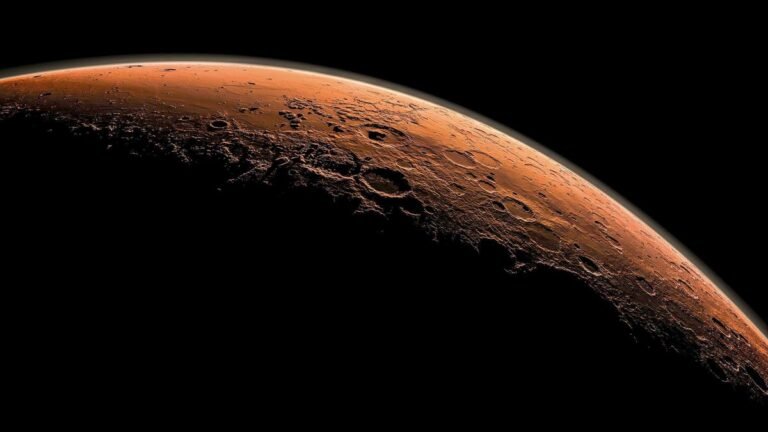Scientists from the Ahmedabad-based Physical Research Laboratory (PRL) have discovered three new craters on Mars in the Tharsis volcanic region of Mars (near 21.0 degrees south latitude, 209 degrees west longitude).
Based on PRL’s recommendation, the International Astronomical Union’s (IAU) Working Group on Planetary System Nomenclature approved the naming of three craters on Mars.
Origin of the name
One of the craters has been named “Lal Crater” after Prof. Devendra Lal, a prominent Indian geophysicist who served as Director of PRL from 1972 to 1983. The crater is 65 km wide and centred at -20.98° and 209.34°.
The second crater has been named “Mulsan Crater” after a town in the Indian state of Uttar Pradesh. Mulsan Crater is a roughly 10 km wide crater that overlaps the eastern side of the Lal Crater rim.
The third crater is the “Hilsa Crater”, an approximately 10 km wide crater that overlaps the western rim of the Lal Crater. It is named after a town in the Indian state of Bihar.
Explaining the scientific importance of the Lal Crater, PRL said the entire crater, located in the Tharsis volcanic region of Mars, is covered in lava.
Non-Lava
There is geological evidence that the crater contains materials other than lava, including 45 metres of sediment beneath the crater, as determined by the SHARAD/MRO ground-penetrating radar. This finding provides compelling evidence that water delivered large amounts of sediment to the crater, now named Lal Crater. It also supports the idea that Mars was once a wetland, with water flowing across its surface.
About the other two craters, the Ahmedabad-based unit of the Department of Space said: “Two small overlapping craters, named Mulsan and Hilsa, on either side of Lal crater, indicate the timeline of the burial process of Lal crater, suggesting that burial was intermittent.”
This is a premium article available only to our subscribers. To read over 250 premium articles every month,
You’ve reached your limit for free articles. Support quality journalism.
You’ve reached your limit for free articles. Support quality journalism.
You have read {{data.cm.views}} from {{data.cm.maxViews}} Free articles.
This is the last free article.


